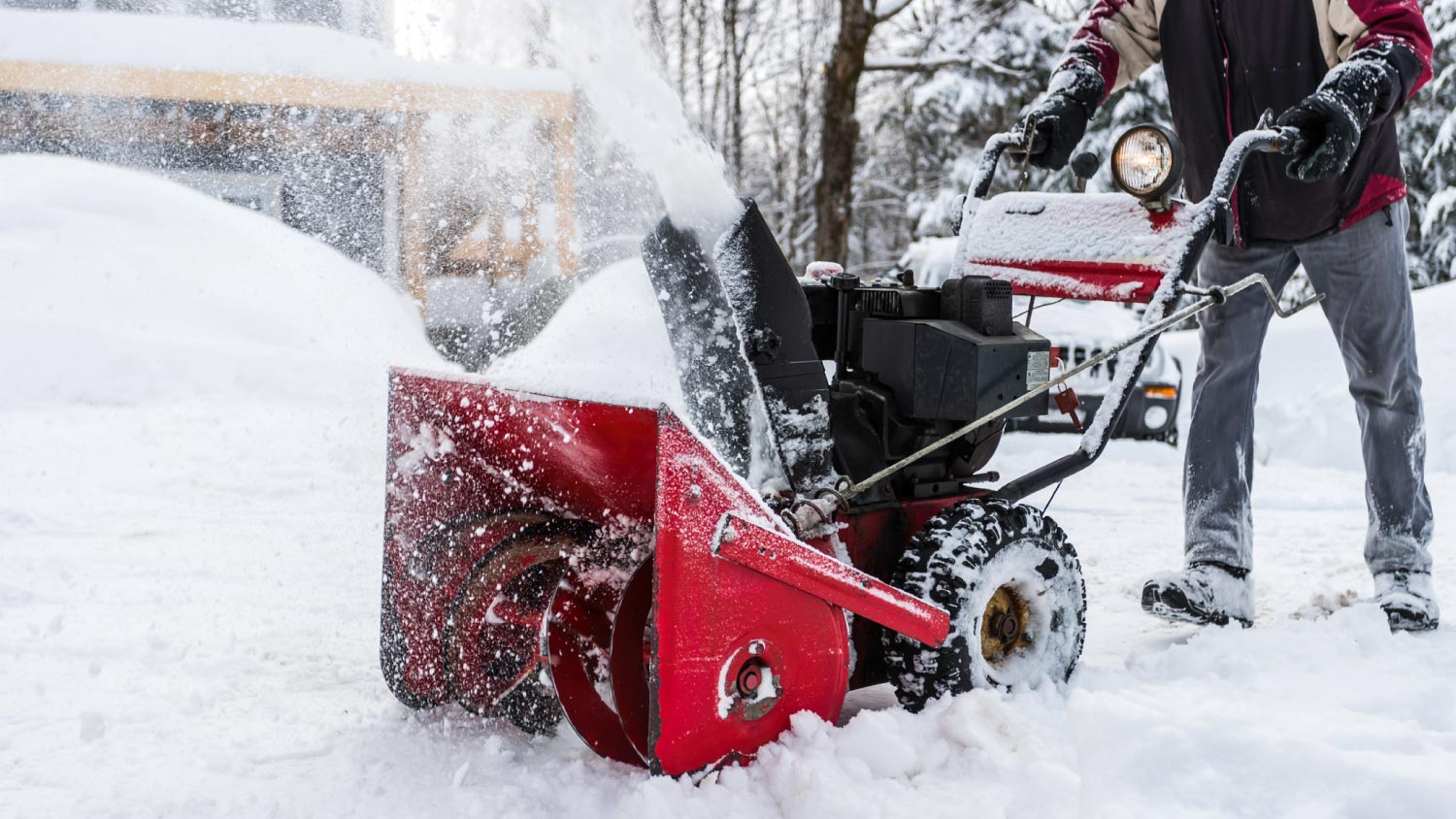
Get the latest snow removal cost estimates, including average prices, key cost factors, and tips to help homeowners budget for safe, efficient snow removal.
From shovels to plows, snow has met its match


If snow is threatening your morning drive to work or school, it’s time to take action using one of many types of snow removal equipment. Popular residential snow removal equipment includes snow shovels, roof rakes, snow throwers, and either electric or gas snow blowers. For larger properties, you may consider using snow sweepers or a snow removal attachment for your vehicle. Let’s review your options to deal with snow and how to know when you need to hire a professional snow removal service.

The humble ice scraper is a handheld tool many homeowners find invaluable during freezing winters. Ice scrapers are equipped with a short, blunted blade (and often with a brush accessory attached), and they’re made to scrape built-up ice and snow remnants off windows or glass. This is the most affordable tool in your snow kit, costing $20 or below.
| Pros | Cons |
|---|---|
| Inexpensive | Won’t help with snow on the ground |
| Helps with tough ice build-up | Breaks easily |
| Easy to use |
Best for: Exposed windows and vehicles

The classic snow shovel is hard to miss. Snow shovels are all-purpose devices to remove low-to-moderate levels of snow from driveways, decks, patios, porches, and smooth walkways. They don’t work well on gravel, grass, sand or similar materials. When choosing a snow shovel, always pick a height that you’re comfortable with to avoid hunching over. Expect to spend around $50 for a high-quality snow shovel.
Metal shovels and metal-edged blades excel at cutting through built-up snow or loose ice, but they are heavier and take more work to use. Plastic and fiberglass options are light and a better fit for larger snow shovels (and your back). Avoid using wooden snow shovels, as they are harder to use and may develop splinters.
Different types snow shovels include:
Ergonomic shovel: These shovels have bent shafts designed to be easier to grip and leverage.
Telescopic shovel: This version has a shaft that can collapse for easier storage, but may not be as sturdy as other versions.
Push shovel: Push shovels are larger versions of shovels that are not designed to lift, but rather push snow out of the way. It’s easier work, but only for snow below 6 inches or or if you are only shoveling a smaller space. Sometimes these shovels come with wheels to make movement easier, which is ideal for people with health hazards.
Sleigh shovel: Sleigh shovels are push shovels with an even larger blade to help shove as much snow as possible.
| Pros | Cons |
|---|---|
| Affordable | Struggles with deeper snow or heavy wet snow |
| Handles many snowfall situations | Takes a lot of physical effort to use |
| Several different designs depending on preference |
Best for: Smaller driveways and snowfall around 10 inches or less
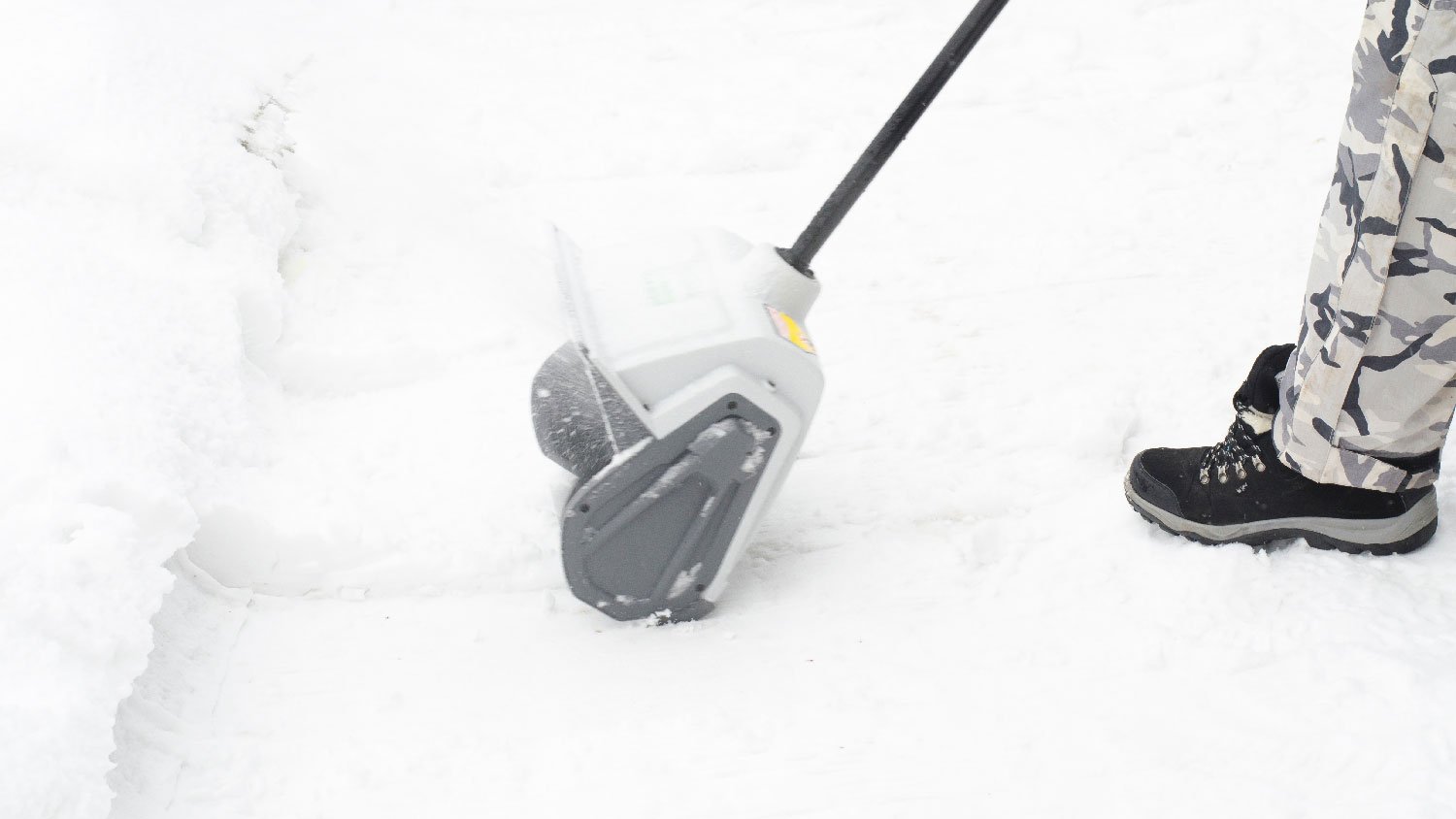
An electric shovel is powered by a battery, but some versions may be corded. It’s a smaller version of a snow thrower, making it easier to carry and push around a smaller driveway or path.
Electric snow shovels use an auger-shaped blade that the battery turns as you wheel it along. Think of it like a giant turning screw that scoops snow up and tosses it out of the way. It’s not as powerful as a traditional snow blower, but it’s a more affordable option. Costs for electric snow shovels start at $100 to $200.
| Pros | Cons |
|---|---|
| Much faster than shoveling | More expensive than a shovel |
| Easy and safe to use | Can’t tackle deep snow |
Best for: Low-effort snow removal 6 inches or less
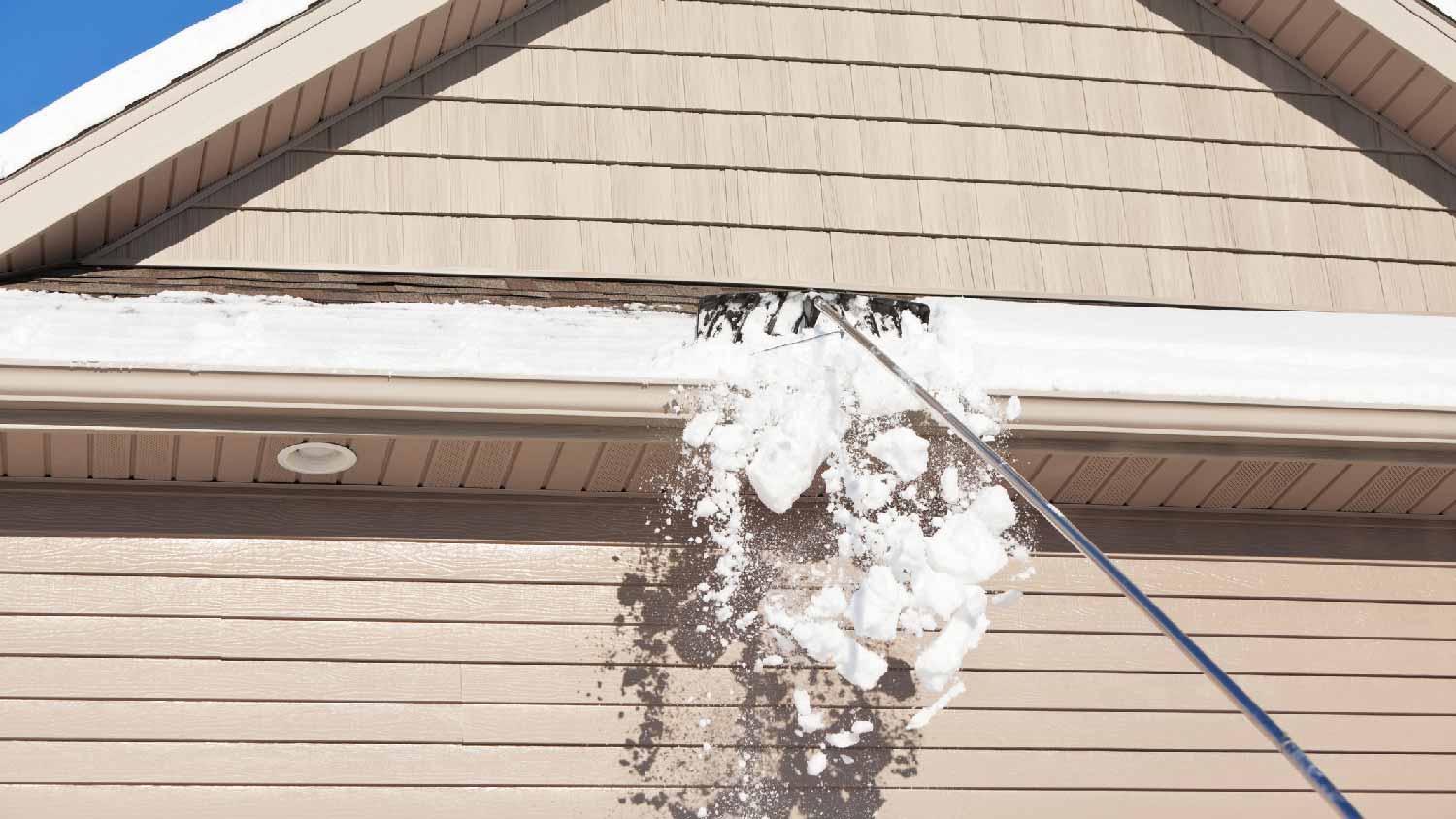
Most rakes don’t work well with snow, but snow rakes are specifically designed to remove snow from rooftops. The lightweight, often telescoping rakes allow homeowners to pull down snow from sloped roofs. That’s important to do in regions that get significant snowfall where heavy snow can pile up on rooftops for days at a time.
In these cases, the snow’s weight and moisture can cause damage to the roof if it lingers for too long. Even worse, during freeze and thaw cycles, the snow can create ice dams, which can damage shingles. Snow rakes address these problems before they start, and cost between $50 and $100.
| Pros | Cons |
|---|---|
| Helps prevent serious snow roof problems | Can’t handle ground snow |
| Affordable | Takes some work to use |
Best for: Sloped rooftops in areas with significant snowfall
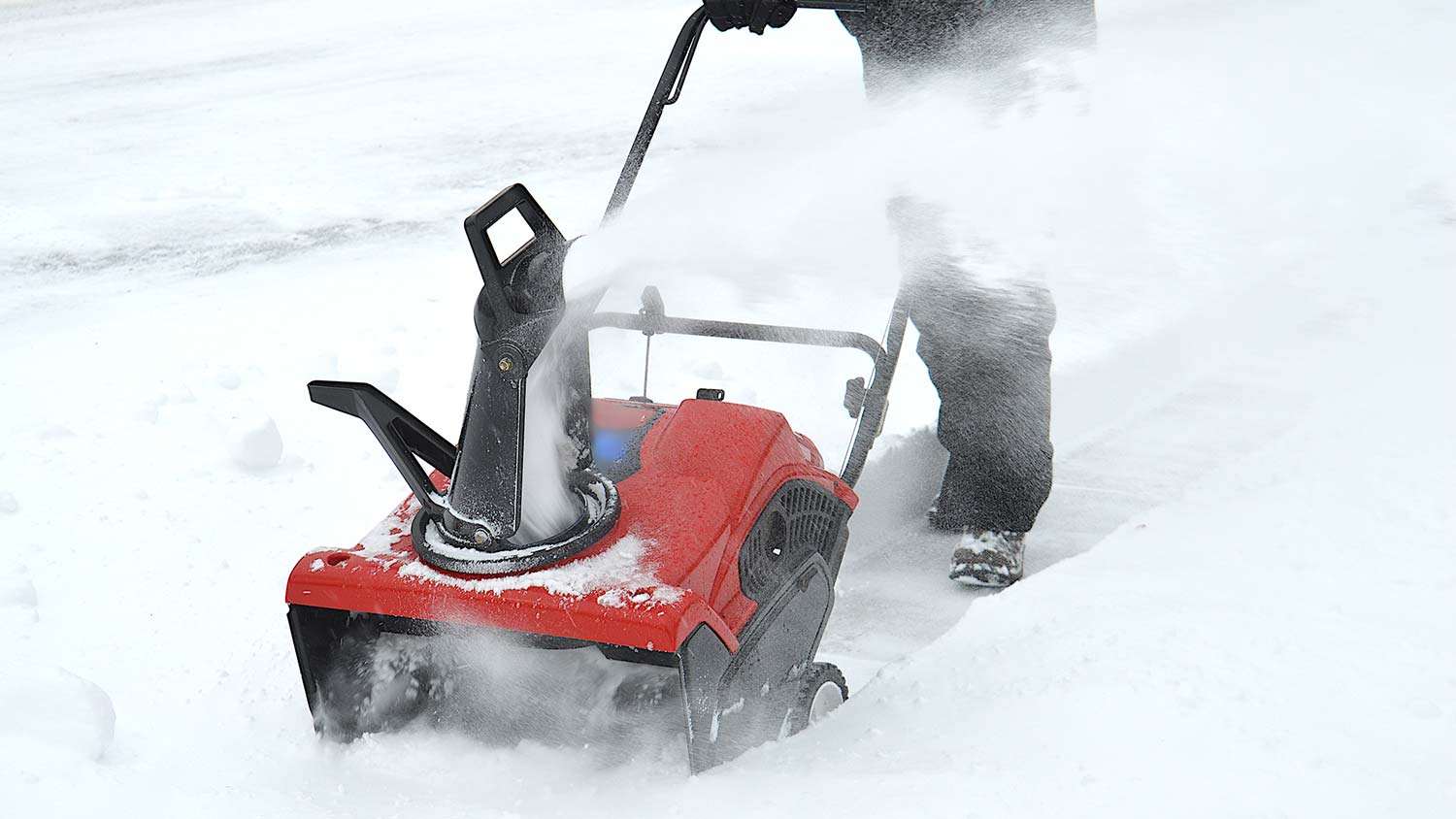
A snow thrower or single-stage snow blower is similar to an electric snow shovel, but the large screw-like auger blade is much larger, allowing owners to tackle broader swaths of snow and toss it farther. Snow throwers are suitable for larger yards or driveways, and regions that get more than a couple inches of snow. However, they struggle to handle deep snow.
Prices vary for snow throwers but they’re much more affordable than larger snow blowers, starting at $100 to $300.
| Pros | Cons |
|---|---|
| An easy upgrade for larger driveways | Requires fuel management |
| No worries about over-exertion | Takes up a lot more space |
| Reasonably affordable |
Best for: Larger driveways with snowfall around 12 inches or less
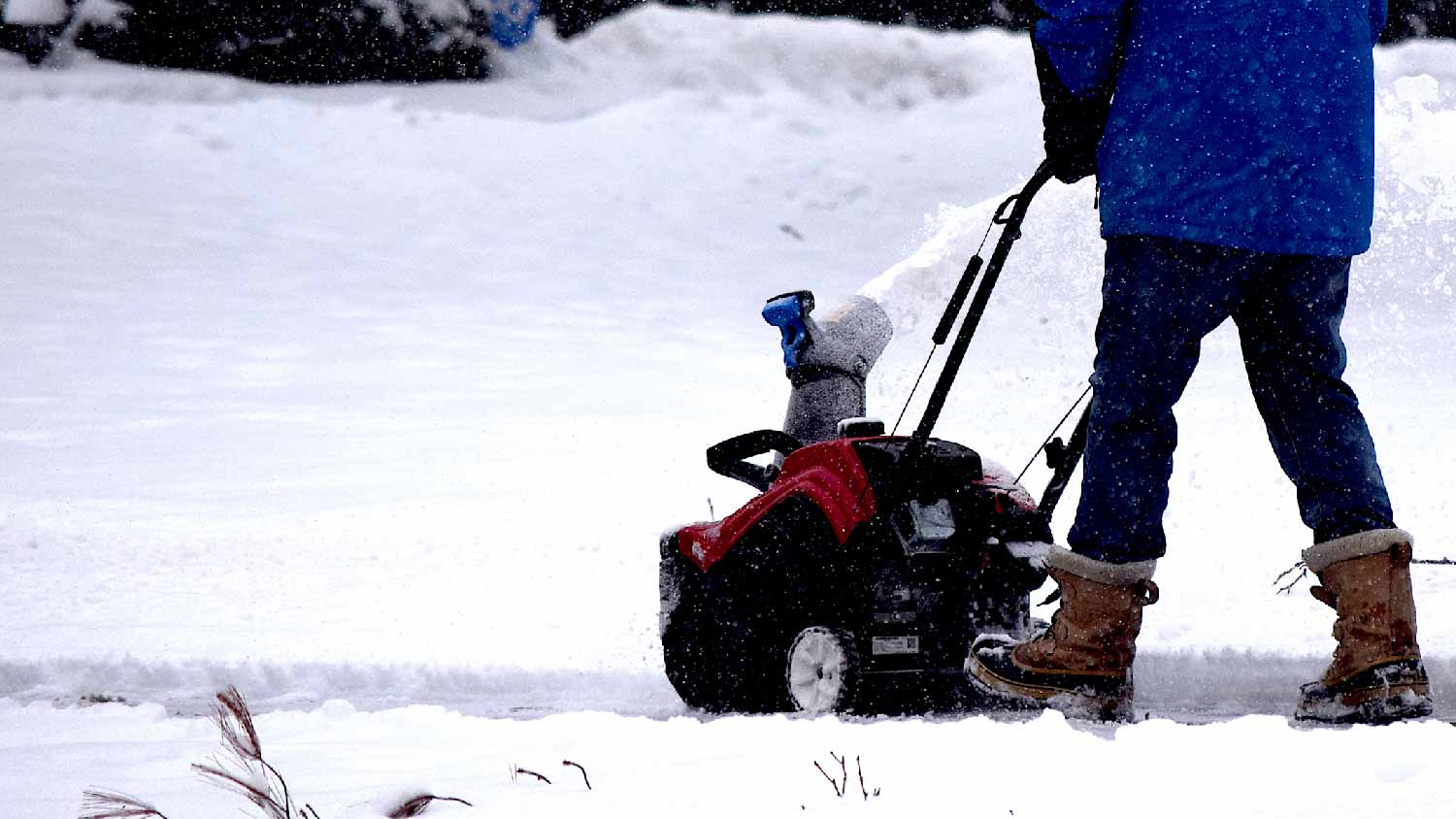
Electric snow blowers substitute gasoline for a battery or corded connection. This is only suitable for smaller snow throwers or single-stage snow blowers, but can be a greener, easier alternative for these devices.
Electric models are easier to store and start each winter, but they may struggle to tackle larger properties or particularly heavy snowfall. They have less power than gasoline versions, so keep the differences in mind when purchasing a snow removal tool. This type of snow blower costs between $200 and $800, depending on the power and size.
| Pros | Cons |
|---|---|
| No fuel management | Less power than gas models |
| Easy to store and use | Limited range due to power cord |
| Lower environmental impact | Less effective on wet snow |
Best for: More eco-friendly snow removal for smaller driveways
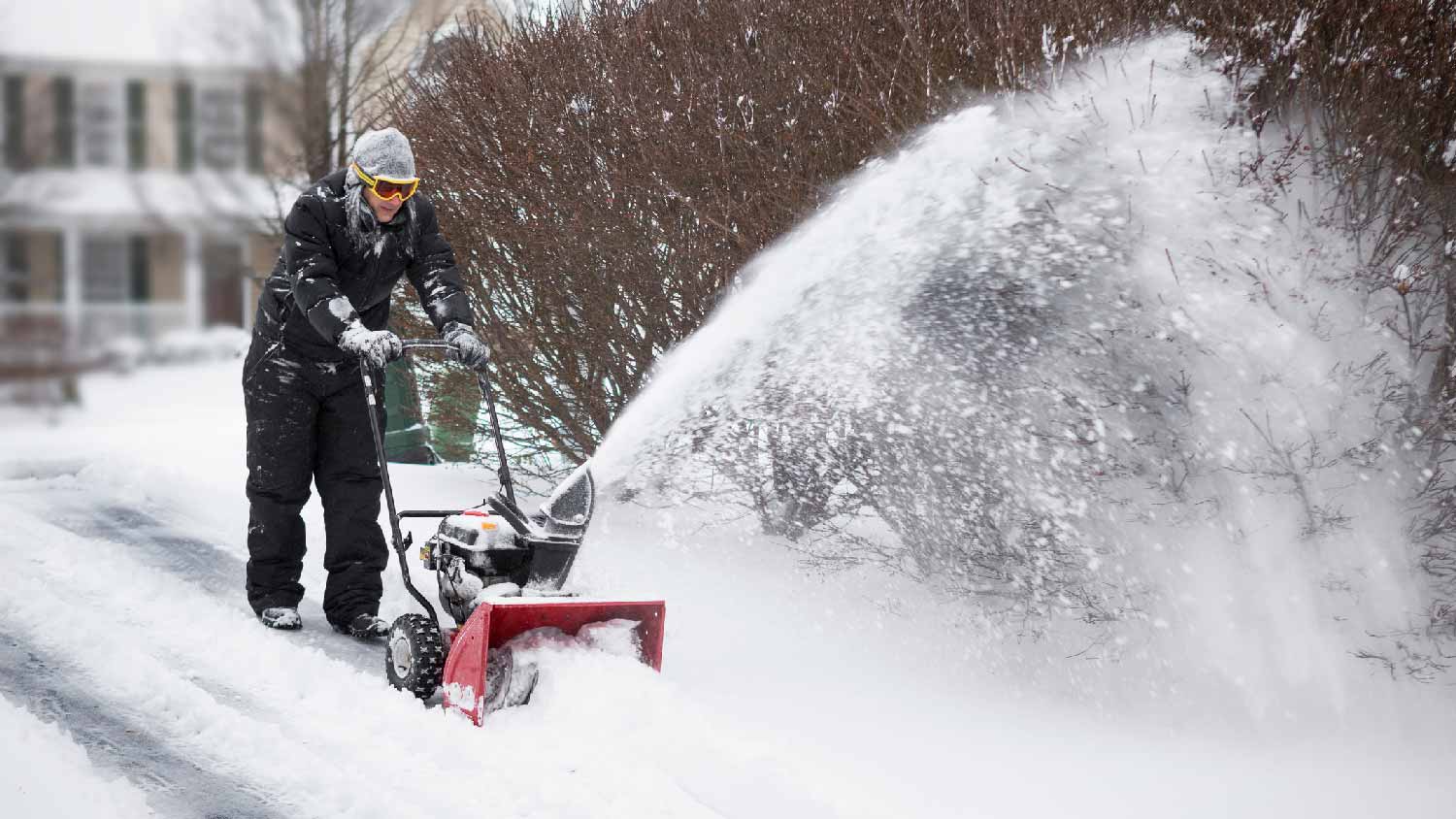
Once snow gets more than 16 inches deep, single-stage snow blowers struggle to get the job done. Luckily, there are larger, more powerful snow blowers known as two-stage models. These gasoline-powered blowers can deal with deeper snow and larger driveways or lots, tossing snow up to 20 feet away to rapidly clear areas.
These more powerful blowers tend to cost between $700 and $1,700. Larger snowblowers can also use diesel instead of gasoline. Check the fuel type of the blower’s engine before you buy.
| Pros | Cons |
|---|---|
| More powerful blower for deeper snow | Expensive |
| Clears large areas easily | |
| Removes ice, heavy snow, and hard-packed snow |
Best for: Snowfall over 16 inches and larger driveways
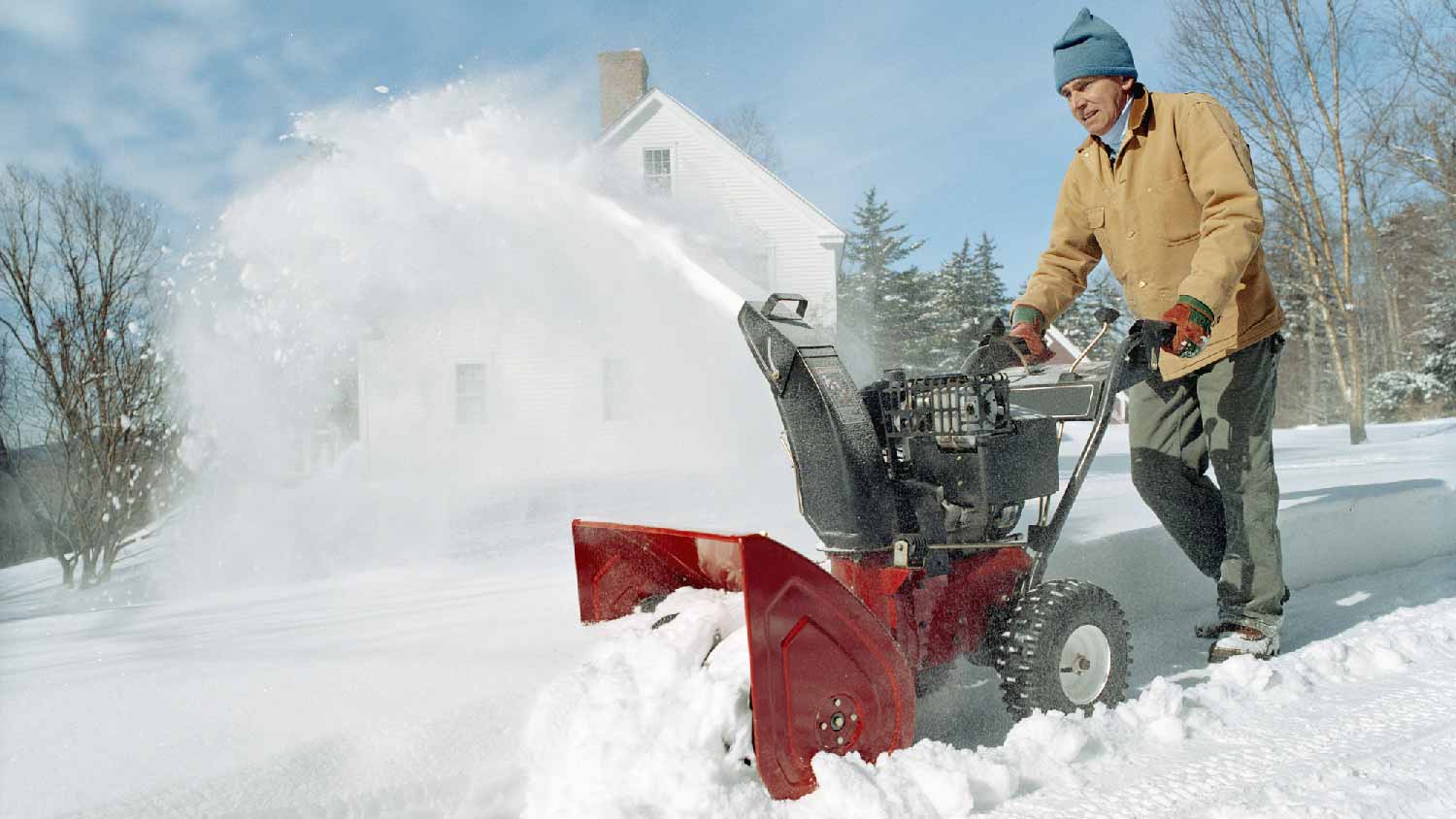
If you live in an area that frequently receives snow that reaches over two feet, snow blowers have a final three-stage option, the largest and most powerful version. Stage-three snow blowers are more common in commercial areas with larger driveways or important public walkways, but residential owners may prefer them for large areas. Prices start around $1,200.
| Pros | Cons |
|---|---|
| Most powerful snowblower for large properties | Expensive |
| Handles deeper snow quickly | Not necessary for most residential areas |
Best for: Only the largest driveways and paths that regularly receive deep snow
Much like robot lawnmowers, automated snow blowers are available for homeowners who want to embrace the latest technology. These autonomous blowers are mini snow tractors fitted with sensors and mapping technology to help them shovel a predetermined space in a driveway or path.
A robot snow blower may sound like an attractive choice compared to getting up early on a freezing morning. However, this kind of equipment is still new and isn’t quite as reliable, and they can struggle to handle heavier snowfall or ice banks. An autonomous blower is also very expensive, starting around $5,000.
| Pros | Cons |
|---|---|
| Program to plow driveways on its own | Very expensive |
| Typically don’t require fuel | Can’t handle surprises like ice banks |
| No effort required for homeowners |
Best for: Deep pockets and busy mornings with relatively mild snowfall
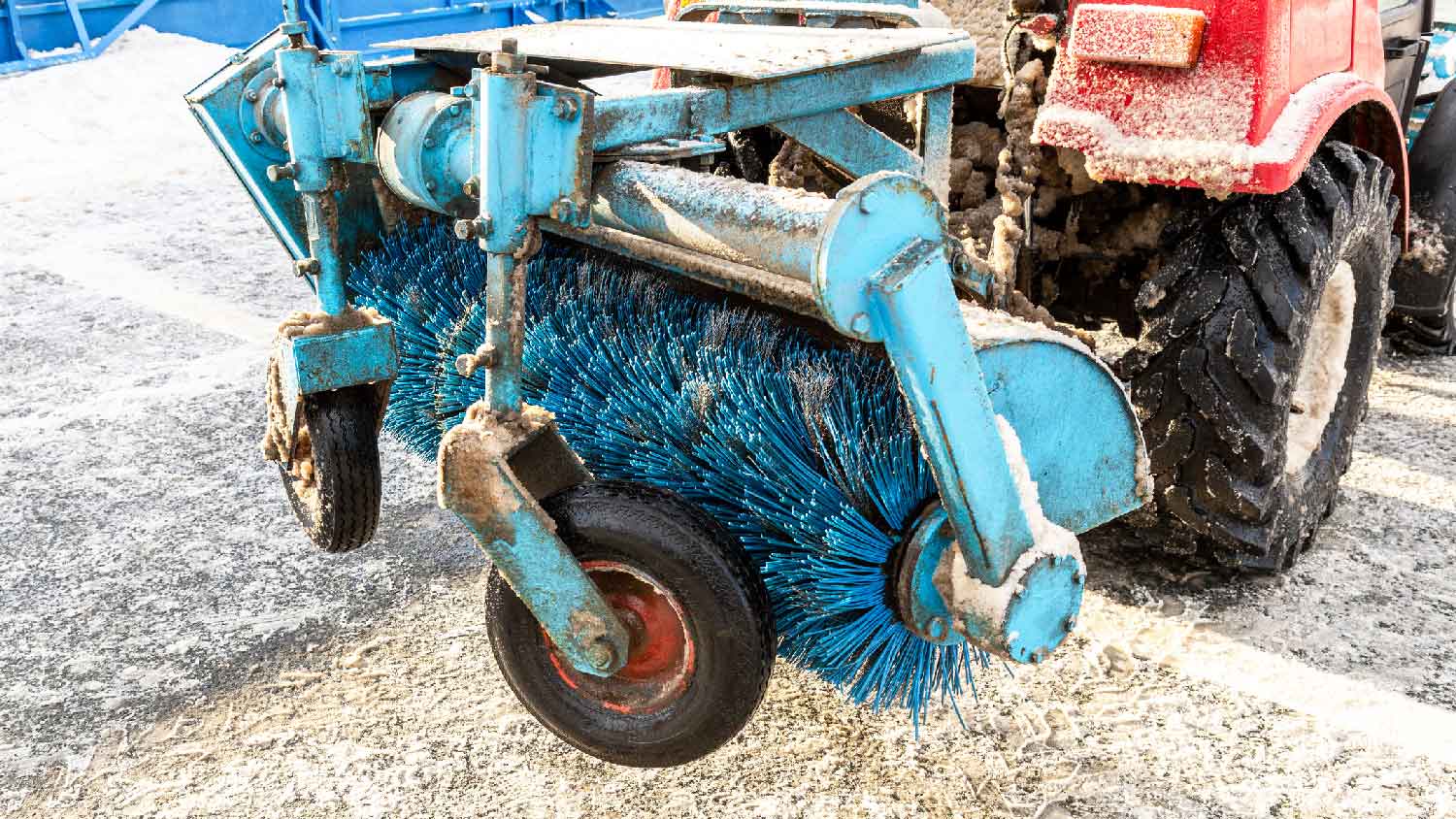
A snow sweeper is a powered and propelled broom that works similarly to a snow blower, but it’s designed for lower levels of snowfall and a more thorough cleaning. Catch snow when it's dry and these sweepers can make quick work of removing it while keeping sidewalks and similar areas extra safe. If a snow blower isn’t right for your situation, consider one of these power brooms instead. Small, home-friendly versions start around $200 to $300.
| Pros | Cons |
|---|---|
| Snow removal and cleaning in one | Struggles with wet snow |
| Faster and easier than a push broom | Doesn’t handle deep or wet snow well |
| Affordable |
Best for: Dry snow that comes regularly in winter but is easily swept away
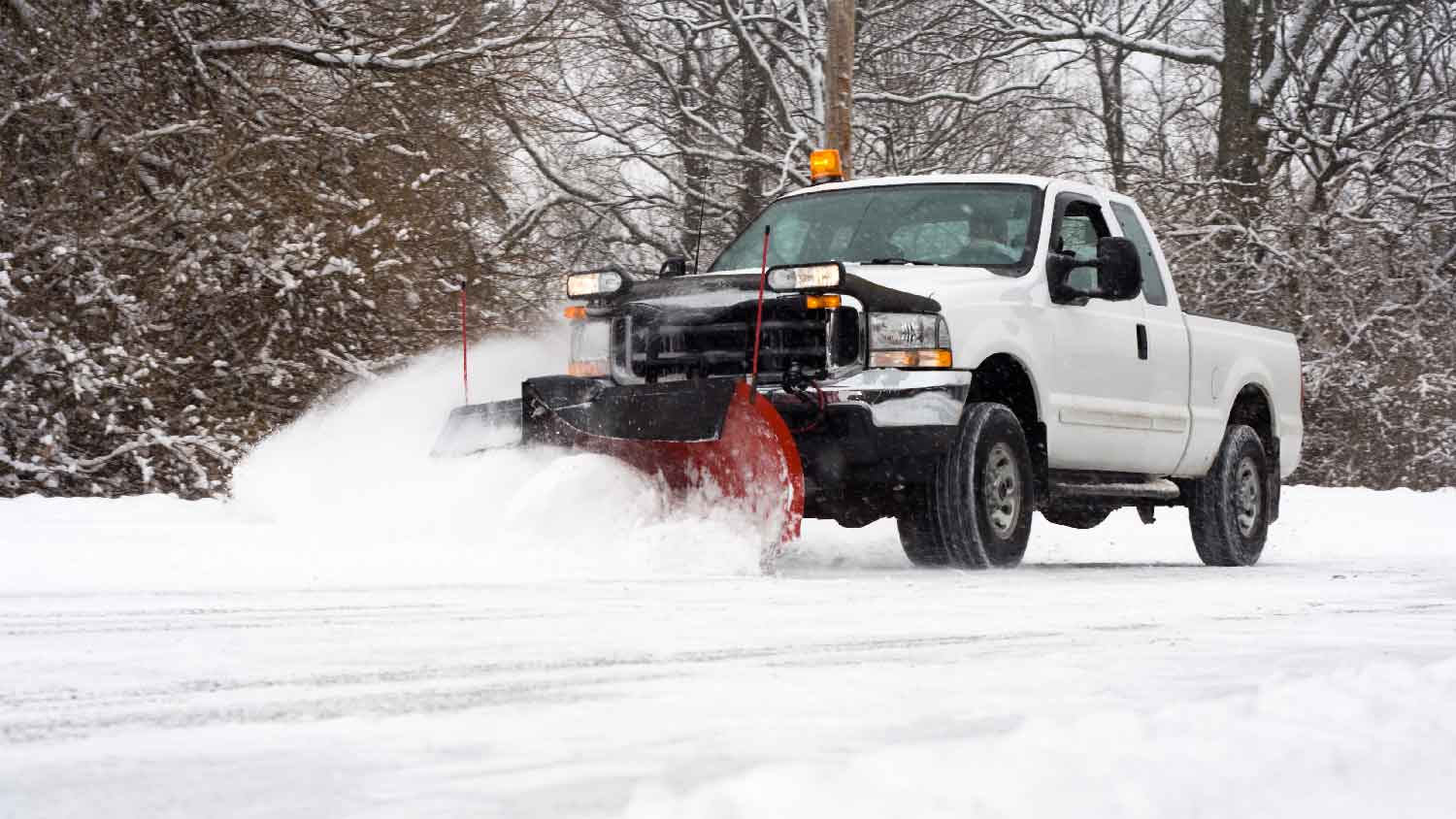
A truck snow plow is a large attachment connected to a compatible pickup truck, which the driver can use as a plow to push large amounts of snow. It’s much more affordable than a dedicated snow tractor, but it takes some experience and skill behind the wheel to use one.
Truck snow plows excel at clearing parking lots, small residential streets, private roads, and large driveways, especially if there’s significant snow. However, they can’t handle smaller sidewalks or paths. Most truck snow plows have options for steel edges, which dig into ice but can damage some cement surfaces or accidentally dig into gravel, or rubber edges, which are gentler on surfaces.
Truck snow plows are an expensive investment, with the smallest versions starting at $2,000 and going up to $8,000.
The three main types are:
Plows: These are more blade-like attachments notable for their ability to angle, making it easier to push snow out of the way on busy streets or driveways. They are the most capable of dealing with ice buildup on the ground, too.
Pushers: Pushers are larger, more box-like attachments that excel at pushing very large amounts of snow a considerable distance and pile it high. It’s a very versatile attachment, especially with some horsepower, but they can’t angle snow like plows.
Buckets: Buckets are designed with the option to lift snow. These are a more specialized attachment and rarely suitable for homeowner snow removal, although they can double as snow equipment if owners already have one for other tasks.
| Pros | Cons |
|---|---|
| Great for large driveways and private roads that see lots of snow | Expensive |
| Save lots of time for the largest projects | Requires compatible truck |
| Helps clear nearby streets and ice banks easily |
Best for: Streets and driveways that get multiple feet of snow regularly
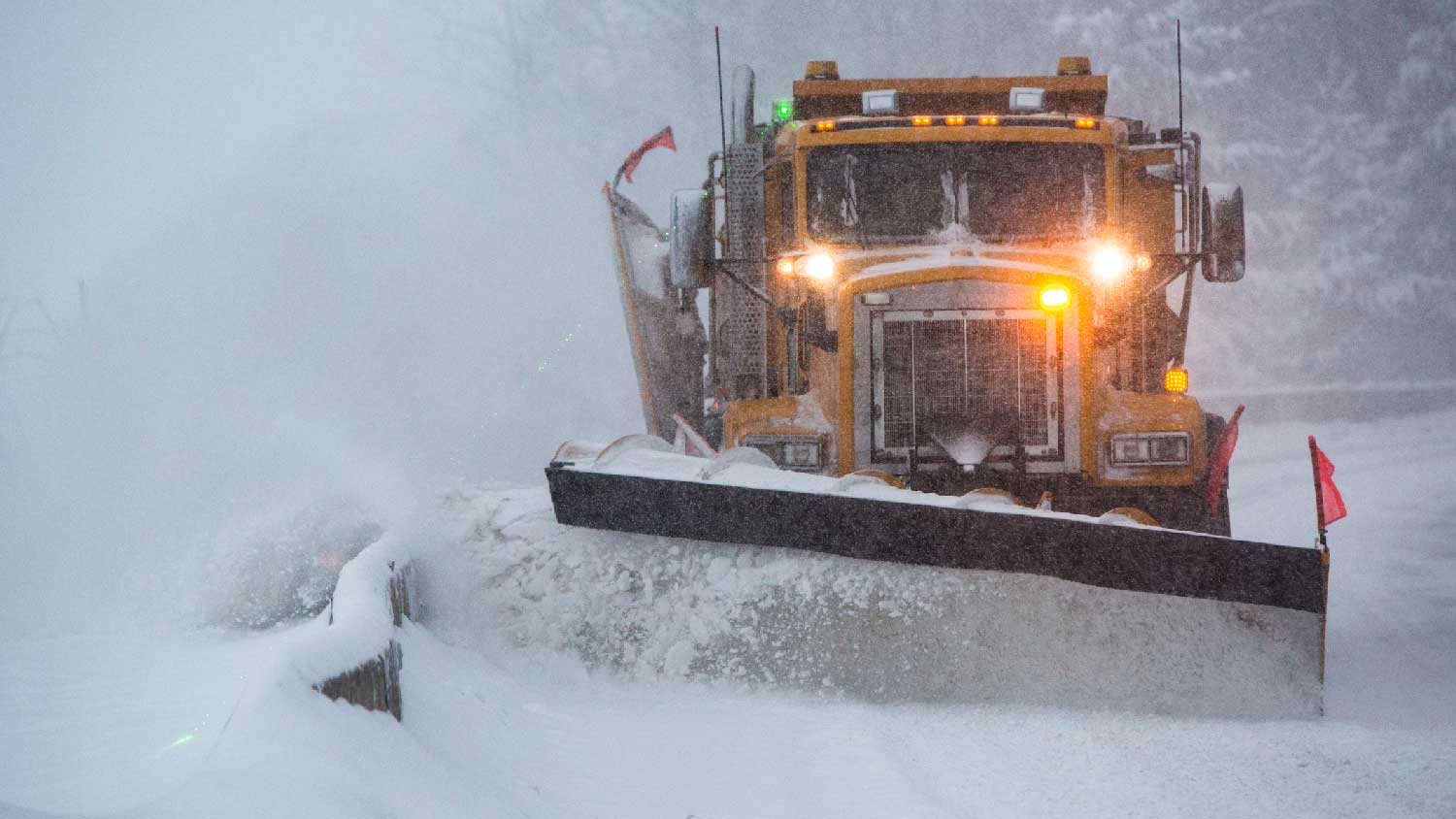
Finally, there are dedicated utility vehicles like tractors used to tackle the largest snow projects. These are strictly commercial-grade vehicles and aren’t suitable for any kind of residential work. Some farms and other rural areas may consider a dedicated utility vehicle for long, rough driveways in snow winters, but in almost every circumstance a truck snow plow attachment is a better, more affordable idea.
| Pros | Cons |
|---|---|
| Commercial solutions to parking lots and large areas | Largely reserved for commercial purposes |
| Plows where pickup trucks may not reach |
Best for: Commercial owners and farmers who know what they’re doing
With all these snow removal options, choosing the right one may be a challenge. Check if your neighbors have snow shovels or similar equipment to learn more. After that, consider these key factors:
Health and fitness: Can you handle vigorous workouts in the cold? Are you at risk of back injuries or heart issues? If so, invest in a snow thrower or blower.
Driveway and path sizes: Some driveways are too large to easily manage with a shovel or even with a small snow blower. In other cases, you simply may not have the time to shovel in the morning, and need a speedier solution.
Snow level: If your region only gets a few inches of snow, you can choose nearly any type of equipment. But once snow starts getting upwards of 6 to 12 inches, it’s time to invest in a heavy-duty blower or similar option.
Snow frequency: One or two bad snowfalls in a year are manageable with basic snow tools and hiring a pro snow removal service to help out. But if you get heavy snow regularly throughout winter, you need more powerful equipment.
How fast snow melts: If snow in your area melts fast, your needs will be different than if snow lingers through many days below freezing. Temperatures also control how wet (and heavier) the snow becomes, and how easily ice will form underneath as it starts melting.
From average costs to expert advice, get all the answers you need to get your job done.

Get the latest snow removal cost estimates, including average prices, key cost factors, and tips to help homeowners budget for safe, efficient snow removal.

Discover the cost to install snow guards. Learn about average prices, key cost factors, and tips to save on your snow guard installation project.

Prepping and starting a snowblower properly is crucial for longevity and efficient operation. Find out how to start a snowblower.

Snow blowers and snow plows are both excellent snow removal tools, but each has pros and cons. Learn the key differences between a snow blower vs. plow.

Knowing what to put on an icy sidewalk is just part of the battle when the temperature drops. Here are more tips for an ice-free walk.

Magnesium chloride is one popular and effective option for ice removal. Learn all about the pros and cons of magnesium chloride ice melt.